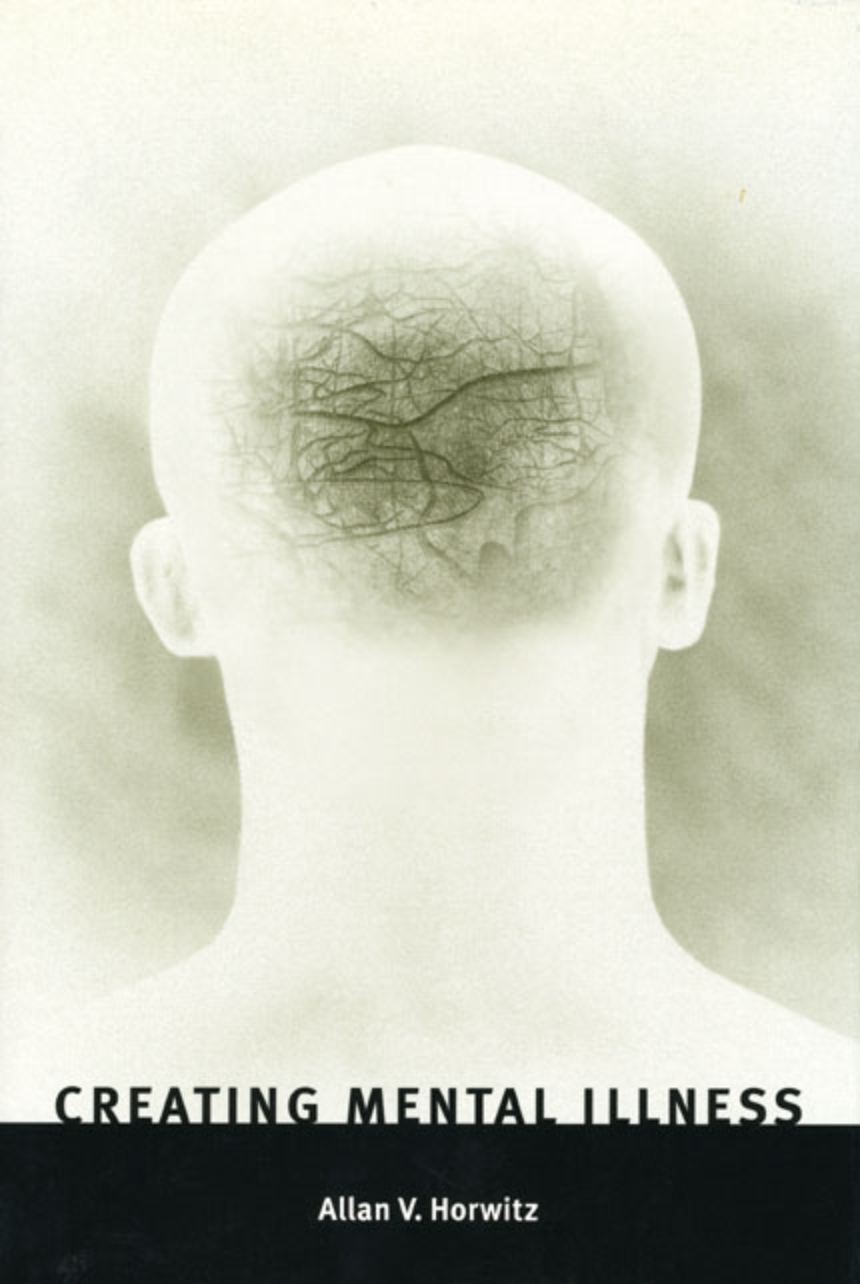Creating Mental Illness
In this surprising book, Allan V. Horwitz argues that our current conceptions of mental illness as a disease fit only a small number of serious psychological conditions and that most conditions currently regarded as mental illness are cultural constructions, normal reactions to stressful social circumstances, or simply forms of deviant behavior.
"Thought-provoking and important. . .Drawing on and consolidating the ideas of a range of authors, Horwitz challenges the existing use of the term mental illness and the psychiatric ideas and practices on which this usage is based. . . . Horwitz enters this controversial territory with confidence, conviction, and clarity."—Joan Busfield, American Journal of Sociology
"Horwitz properly identifies the financial incentives that urge therapists and drug companies to proliferate psychiatric diagnostic categories. He correctly identifies the stranglehold that psychiatric diagnosis has on research funding in mental health. Above all, he provides a sorely needed counterpoint to the most strident advocates of disease-model psychiatry."—Mark Sullivan, Journal of the American Medical Association
"Horwitz makes at least two major contributions to our understanding of mental disorders. First, he eloquently draws on evidence from the biological and social sciences to create a balanced, integrative approach to the study of mental disorders. Second, in accomplishing the first contribution, he provides a fascinating history of the study and treatment of mental disorders. . . from early asylum work to the rise of modern biological psychiatry."—Debra Umberson, Quarterly Review of Biology
"Thought-provoking and important. . .Drawing on and consolidating the ideas of a range of authors, Horwitz challenges the existing use of the term mental illness and the psychiatric ideas and practices on which this usage is based. . . . Horwitz enters this controversial territory with confidence, conviction, and clarity."—Joan Busfield, American Journal of Sociology
"Horwitz properly identifies the financial incentives that urge therapists and drug companies to proliferate psychiatric diagnostic categories. He correctly identifies the stranglehold that psychiatric diagnosis has on research funding in mental health. Above all, he provides a sorely needed counterpoint to the most strident advocates of disease-model psychiatry."—Mark Sullivan, Journal of the American Medical Association
"Horwitz makes at least two major contributions to our understanding of mental disorders. First, he eloquently draws on evidence from the biological and social sciences to create a balanced, integrative approach to the study of mental disorders. Second, in accomplishing the first contribution, he provides a fascinating history of the study and treatment of mental disorders. . . from early asylum work to the rise of modern biological psychiatry."—Debra Umberson, Quarterly Review of Biology
315 pages | 2 line drawings | 6 x 9 | © 2001
Anthropology: Cultural and Social Anthropology
Biological Sciences: Behavioral Biology
Psychology: Clinical Psychology, Social Psychology
Sociology: General Sociology, Medical Sociology
Reviews
Table of Contents
Preface
Introduction—The Proliferation of Mental Illnesses
1. A Concept of Mental Disorder
2. The Expansion of Mental Disorder in Dynamic Psychiatry
3. The Emergence of Diagnostic Psychiatry
4. The Extension of Mental Illnesses into the Community
5. The Structuring of Mental Disorders
6. The Biological Foundations of Diagnostic Psychiatry
7. Social Causes of Distress
8. Diagnostic Psychiatry and Therapy
Conclusion
Mental Illnesses as Social Constructions
Notes
References
Index
Introduction—The Proliferation of Mental Illnesses
1. A Concept of Mental Disorder
2. The Expansion of Mental Disorder in Dynamic Psychiatry
3. The Emergence of Diagnostic Psychiatry
4. The Extension of Mental Illnesses into the Community
5. The Structuring of Mental Disorders
6. The Biological Foundations of Diagnostic Psychiatry
7. Social Causes of Distress
8. Diagnostic Psychiatry and Therapy
Conclusion
Mental Illnesses as Social Constructions
Notes
References
Index
Awards
American Sociological Assn.: ASA Best Publication in Mental Health Award
Won
